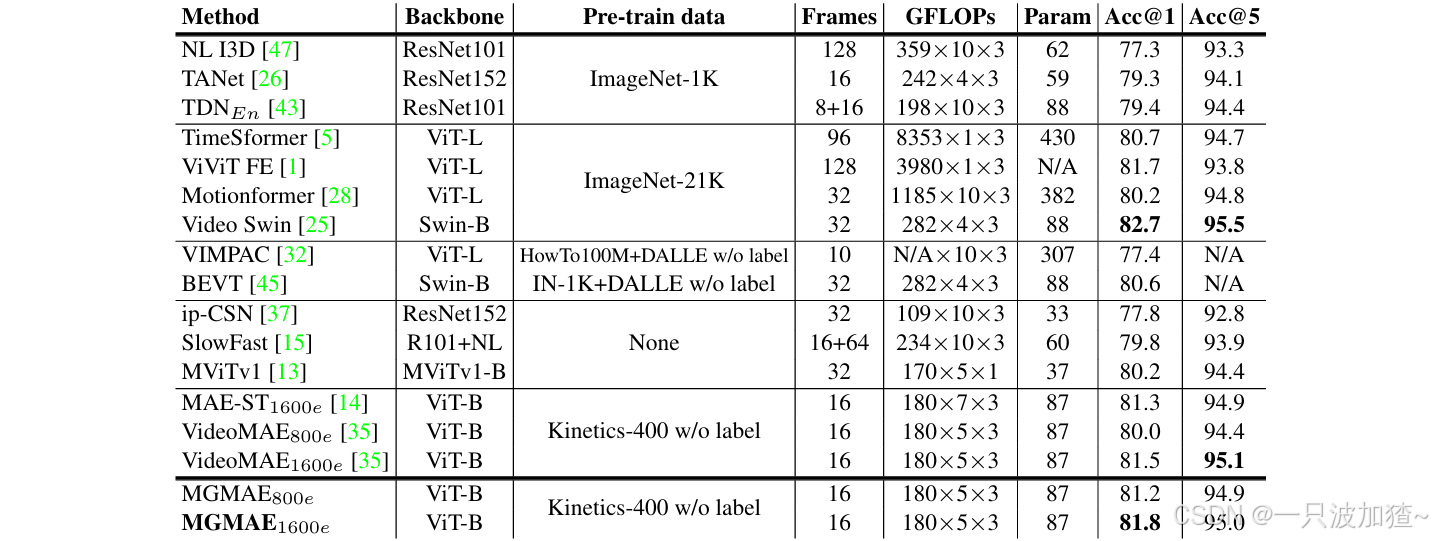经典神经网络-LeNets5
1998年Yann LeCun等提出的第一个用于手写数字识别问题并产生实际商业(邮政行业)价值的卷积神经网络
参考:论文笔记:Gradient-Based Learning Applied to Document Recognition-CSDN博客
1 网络模型结构
整体结构解读:
输入图像:32×32×1
三个卷积层:
C1:输入图片32×32,6个5×5卷积核 ,输出特征图大小28×28(32-5+1)=28,一个bias参数;
可训练参数一共有:(5×5+1)×6=156
C3 :输入图片14×14,16个5×5卷积核,有6×3+6×4+3×4+1×6=60个通道,输出特征图大小10×10((14-5)/1+1),一个bias参数;
可训练参数一共有:6(3×5×5+1)+6×(4×5×5+1)+3×(4×5×5+1)+1×(6×5×5+1)=1516
C3的非密集的特征图连接:
C3的前6个特征图与S2层相连的3个特征图相连接,后面6个特征图与S2层相连的4个特征图相连 接,后面3个特征图与S2层部分不相连的4个特征图相连接,最后一个与S2层的所有特征图相连。 采用非密集连接的方式,打破对称性,同时减少计算量,共60组卷积核。主要是为了节省算力。
C5:输入图片5×5,16个5×5卷积核,包括120×16个5×5卷积核 ,输出特征图大小1×1(5-5+1),一个bias参数;
可训练参数一共有:120×(16×5×5+1)=48120
两个池化层S2和S4:
都是2×2的平均池化,并添加了非线性映射
S2(下采样层):输入28×28,采样区域2×2,输入相加,乘以一个可训练参数, 再加上一个可训练偏置,使用sigmoid激活,输出特征图大小:14×14(28/2)
S4(下采样层):输入10×10,采样区域2×2,输入相加,乘以一个可训练参数, 再加上一个可训练偏置,使用sigmoid激活,输出特征图大小:5×5(10/2)
两个全连接层:
第一个全连接层:输入120维向量,输出84个神经元,计算输入向量和权重向量之间的点积,再加上一个偏置,结果通过sigmoid函数输出。84的原因是:字符编码是ASCII编码,用7×12大小的位图表示,-1白色1黑色,84可以用于对每一个像素点的值进行估计。
第二个全连接层(Output层-输出层):输出 10个神经元 ,共有10个节点,代表数字0-9。
所有激活函数采用Sigmoid
2 网络模型实现
2.1模型定义
import torch import torch.nn as nn class LeNet5s(nn.Module):def __init__(self):super(LeNet5s, self).__init__() # 继承父类# 第一个卷积层self.C1 = nn.Sequential(nn.Conv2d(in_channels=1, # 输入通道out_channels=6, # 输出通道kernel_size=5, # 卷积核大小),nn.ReLU(),)# 池化:平均池化self.S2 = nn.AvgPool2d(kernel_size=2) # C3:3通道特征融合单元self.C3_unit_6x3 = nn.Conv2d(in_channels=3,out_channels=1,kernel_size=5,)# C3:4通道特征融合单元self.C3_unit_6x4 = nn.Conv2d(in_channels=4,out_channels=1,kernel_size=5,) # C3:4通道特征融合单元,剔除中间的1通道self.C3_unit_3x4_pop1 = nn.Conv2d(in_channels=4,out_channels=1,kernel_size=5,) # C3:6通道特征融合单元self.C3_unit_1x6 = nn.Conv2d(in_channels=6,out_channels=1,kernel_size=5,) # S4:池化self.S4 = nn.AvgPool2d(kernel_size=2)# 全连接层self.fc1 = nn.Sequential(nn.Linear(in_features=16 * 5 * 5, out_features=120), nn.ReLU())self.fc2 = nn.Sequential(nn.Linear(in_features=120, out_features=84), nn.ReLU())self.fc3 = nn.Linear(in_features=84, out_features=10) def forward(self, x):# 训练数据批次大小batch_sizenum = x.shape[0] x = self.C1(x)x = self.S2(x)# 生成一个empty张量outchannel = torch.empty((num, 0, 10, 10))# 6个3通道的单元for i in range(6):# 定义一个元组:存储要提取的通道特征的下标channel_idx = tuple([j % 6 for j in range(i, i + 3)])x1 = self.C3_unit_6x3(x[:, channel_idx, :, :])outchannel = torch.cat([outchannel, x1], dim=1) # 6个4通道的单元for i in range(6):# 定义一个元组:存储要提取的通道特征的下标channel_idx = tuple([j % 6 for j in range(i, i + 4)])x1 = self.C3_unit_6x4(x[:, channel_idx, :, :])outchannel = torch.cat([outchannel, x1], dim=1) # 3个4通道的单元,先拿五个,干掉中那一个for i in range(3):# 定义一个元组:存储要提取的通道特征的下标channel_idx = tuple([j % 6 for j in range(i, i + 5)])# 删除第三个元素channel_idx = channel_idx[:2] + channel_idx[3:]print(channel_idx)x1 = self.C3_unit_3x4_pop1(x[:, channel_idx, :, :])outchannel = torch.cat([outchannel, x1], dim=1) x1 = self.C3_unit_1x6(x)# 平均池化outchannel = torch.cat([outchannel, x1], dim=1)outchannel = nn.ReLU()(outchannel) x = self.S4(outchannel)# 对数据进行变形x = x.view(x.size(0), -1)# 全连接层x = self.fc1(x)x = self.fc2(x)# TODO:SOFTMAXoutput = self.fc3(x) return output def test001():net = LeNet5s()# 随机一个测试数据input = torch.randn(128, 1, 32, 32)output = net(input)print(output.shape)pass if __name__ == "__main__":test001()
2.2全局变量
import torch import torch.nn as nn import torch.optim as optim import torchvision import torchvision.transforms as transforms import os dir = os.path.dirname(__file__) modelpath = os.path.join(dir, "weight/model.pth") datapath = os.path.join(dir, "data") # 数据预处理和加载 transform = transforms.Compose([transforms.Resize((32, 32)), # 调整输入图像大小为32x32transforms.ToTensor(),transforms.Normalize((0.1307,), (0.3081,)),] )
2.3模型训练
def train():
trainset = torchvision.datasets.MNIST(root=datapath, train=True, download=True, transform=transform)trainloader = torch.utils.data.DataLoader(trainset, batch_size=32, shuffle=True)
# 实例化模型net = LeNet5()
# 使用MSELoss作为损失函数criterion = nn.MSELoss()
# 使用SGD优化器optimizer = optim.SGD(net.parameters(), lr=0.01, momentum=0.9)
# 训练模型num_epochs = 10for epoch in range(num_epochs):running_loss = 0.0for i, data in enumerate(trainloader, 0):inputs, labels = data
# 将labels转换为one-hot编码labels_one_hot = torch.zeros(labels.size(0), 10).scatter_(1, labels.view(-1, 1), 1.0)labels_one_hot = labels_one_hot.to(torch.float32)optimizer.zero_grad()outputs = net(inputs)loss = criterion(outputs, labels_one_hot)loss.backward()optimizer.step()
running_loss += loss.item()if i % 100 == 99:print(f"[{epoch + 1}, {i + 1}] loss: {running_loss / 100:.3f}")running_loss = 0.0# 保存模型参数torch.save(net.state_dict(), modelpath)print("Finished Training")
2.4验证
def vaild():
testset = torchvision.datasets.MNIST(root=datapath, train=False, download=True, transform=transform)testloader = torch.utils.data.DataLoader(testset, batch_size=32, shuffle=False)# 实例化模型net = LeNet5()net.load_state_dict(torch.load(modelpath))# 在测试集上测试模型correct = 0total = 0with torch.no_grad():for data in testloader:images, labels = dataoutputs = net(images)_, predicted = torch.max(outputs.data, 1)total += labels.size(0)correct += (predicted == labels).sum().item()
print(f"验证集: {100 * correct / total:.2f}%")![[渗透测试]热门搜索引擎推荐— — shodan篇](https://i-blog.csdnimg.cn/direct/9f106e847d0746a88671aed371c5d055.png)
![BUU30 [网鼎杯 2018]Fakebook1](https://i-blog.csdnimg.cn/direct/15947764142b411ba52b26a106aaff9b.png)

















